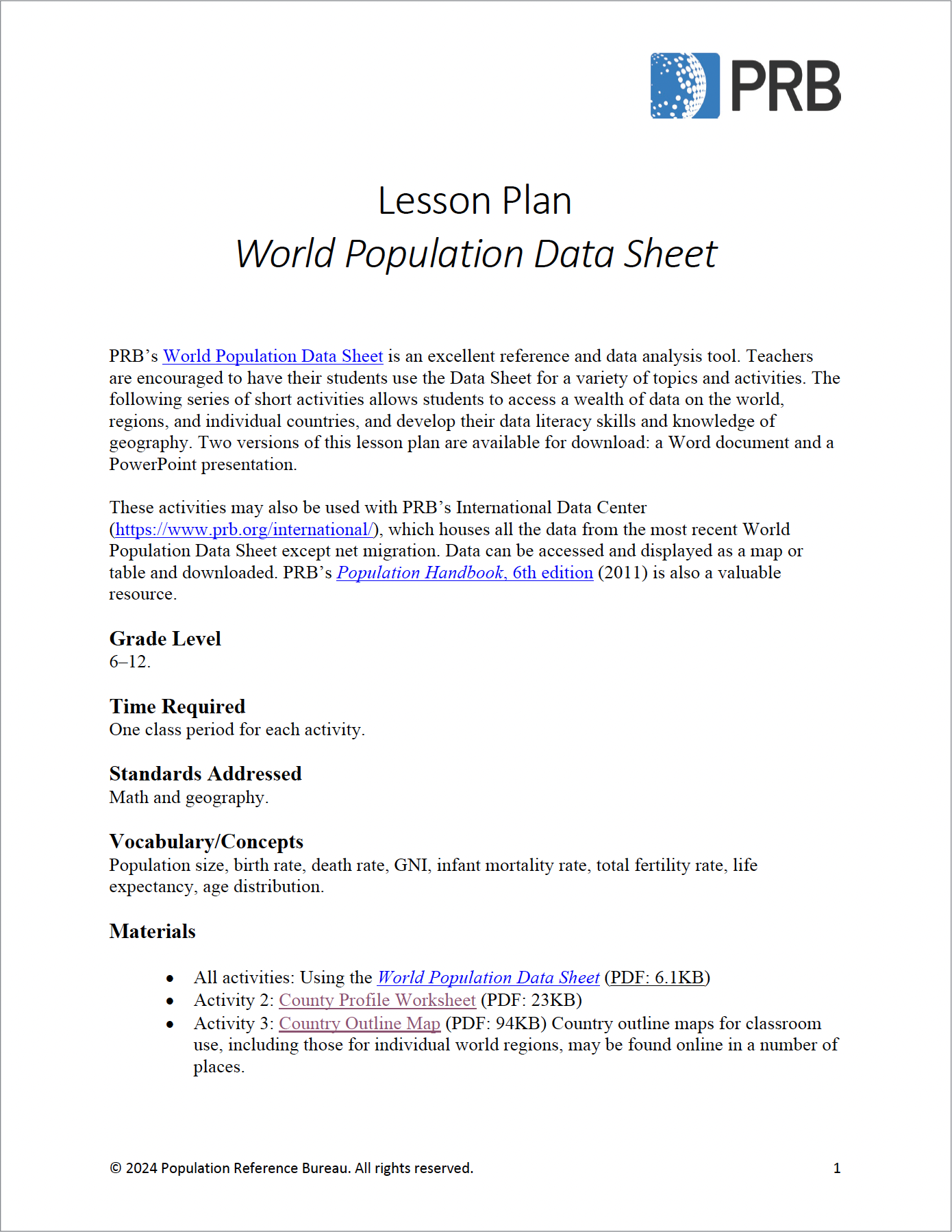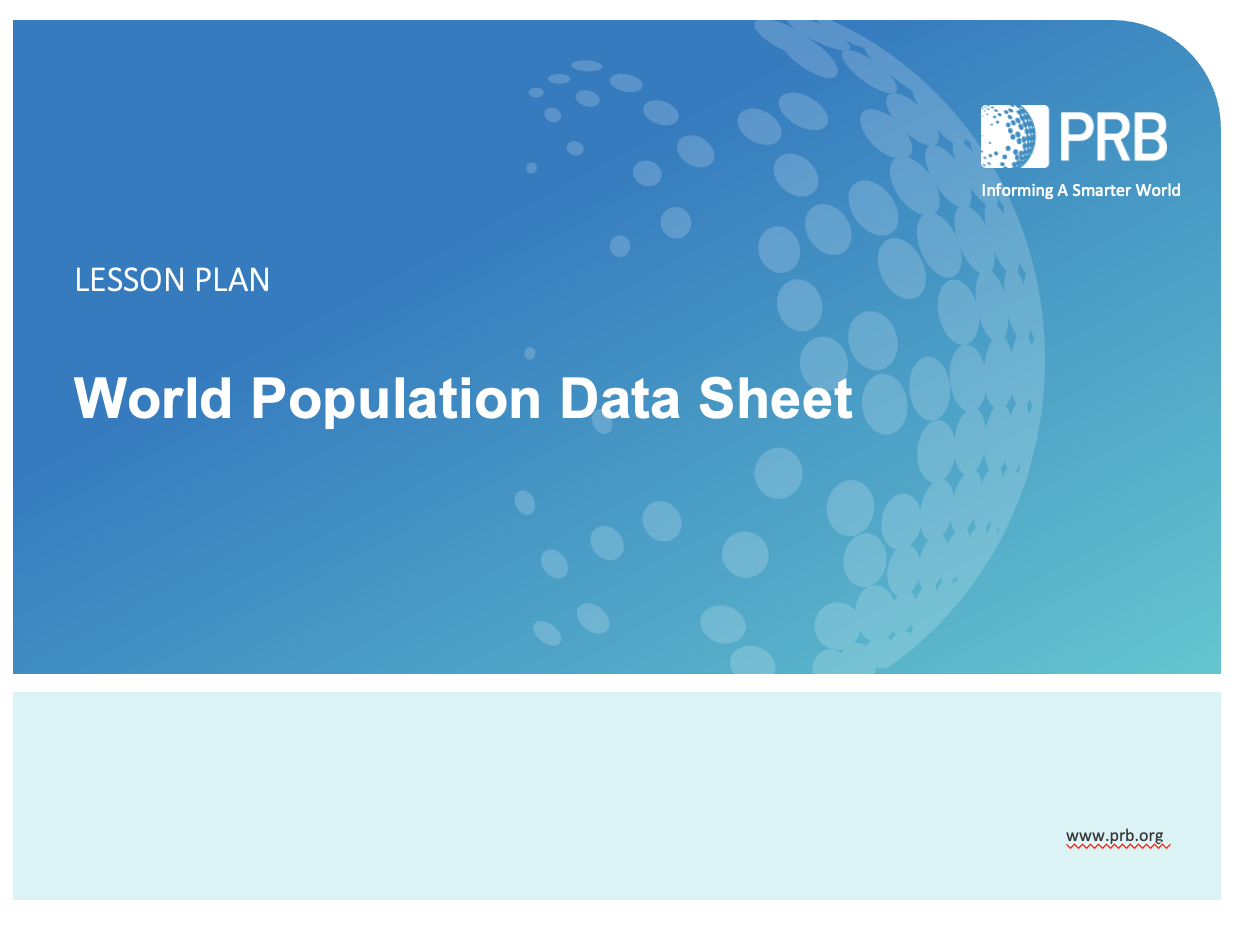Date
September 13, 2024
Instructor Resources
PRB’s World Population Data Sheet is an excellent reference and data analysis tool. Instructors are encouraged to have their students use the Data Sheet for a variety of topics and activities. This lesson plan includes a series of short activities that allow students to access a wealth of data on the world, regions, and individual countries, and develop their data literacy skills and knowledge of geography.
Note: The lesson plan is designed to be used with every edition of the World Population Data Sheet; updates will be made available as needed to reflect changes in indicators. You can find the latest date of revision noted at the end of this page and in each lesson plan file available for download (PDF, PowerPoint).
Grade Level
6–12.
Time Required
One class period for each of activity.
Standards Addressed
Math and geography.
Vocabulary/Concepts
Population size, birth rate, death rate, GNI, infant mortality rate, total fertility rate, life expectancy, age distribution.
LEARNING OBJECTIVES
Activity 1: PRB’s World Population Data Sheet at a Glance
- Identify a country’s population characteristics using the World Population Data Sheet.
- Rank countries highest/lowest in a population indicator.
Activity 2: Profile a Country
- Practice organizing a country’s population information into a country profile.
- Hypothesize about the data in the country profile.
Activity 3: Map the Data
- Illustrate countries’ selected population characteristics on a map.
- Compare the illustrated population characteristics of selected countries.
SUPPORTING MATERIALS
All activities may be used with PRB’s International Data Center (https://www.prb.org/international/), which houses all the data from the most recent World Population Data Sheet except net migration. Data can be accessed and displayed as a map or table and downloaded. PRB’s Population Handbook, 6th edition (2011) is also a valuable resource.
You will also need:
- All activities: The latest World Population Data Sheet (PDF: 2.5MB)
- Activity 2: County Profile Worksheet (PDF: 117KB)
- Activity 3: Country Outline Map (PDF: 225KB) Country outline maps for classroom use, including those for individual world regions, may be found online in a number of places.
The activities in this lesson plan were adapted from exercises submitted by Eugene J. Kinerney of the University of the District of Columbia and Basheer K. Nijim of the University of Northern Iowa. It was last updated in 2024 by Nancy Matuszak, PRB.



